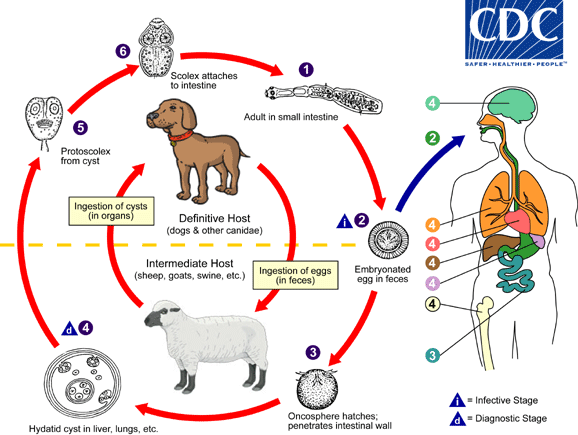Hydatid Disease (Part II) : How a tiny tapeworm larva makes you wicked sick (Gross picture alert)
Let's go back to the life cycle of Echinococcus granulosus, the cestode (tapeworm) that causes hydatid disease.
(There are two types of people: Those who like studying parasite life cycles, and those who would rather suffer from the parasite. Guess which type we are here at PAZ.)
Here is an adult Taenia solium tapeworm, (also known as the pork tapeworm, the kind you get from eating infested, undercooked pork) being extracted from a patient's intestines via endoscopy (this is not the standard treatment!).

You can see that it's a rather long parasite. Tapeworms are composed of a head, called a scolex, a neck region, and the strobila, which is a chain of proglottids. The proglottids are the little sections you see making up the bulk of the worm, or if you've been lucky enough to see them in your dog's poop, the little pieces of off-white that look like rice grains wriggling around.
A worm like the pork tapeworm has a lengthy chain of proglottids. E. granulosus , the tapeworm of hydatid disease, has only 5 segments: the scolex, the neck and three proglottids. The whole thing is only 3 to 6 mm long. The definitive host--the host that harbors the adult stage--in E granulosus is not the human, but our best friend, Canis familiaris.
To be continued......




















